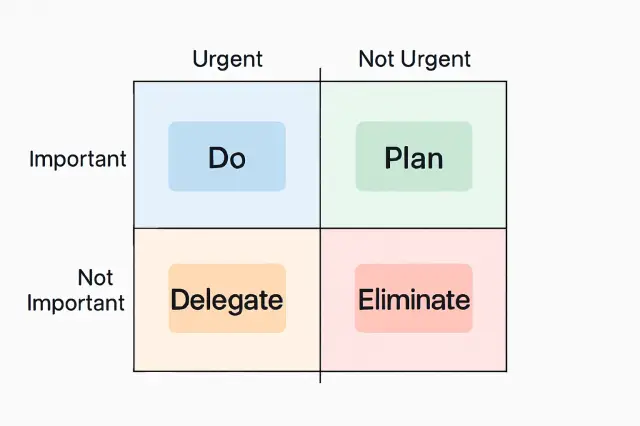The Pomodoro Technique is one of the most effective time management systems ever created. It helps people boost focus, reduce procrastination, and manage their mental energy efficiently. Developed by Francesco Cirillo in the late 1980s, the technique uses a simple principle: break your work into focused intervals of 25 minutes, followed by short breaks. Each interval is called a Pomodoro—named after the tomato-shaped kitchen timer Cirillo used as a student.
At its core, this method leverages the science of human attention and cognitive recovery. The brain isn’t designed to sustain high concentration for long periods. By working in timed cycles, you maintain focus without burnout, making this system popular among students, programmers, creatives, and remote workers.
If you want to apply this method instantly, try the Pomodoro Timer on Calculatorr.com. It’s free, accurate, and works perfectly for online or offline productivity sessions.
How the Pomodoro Technique Works
The technique is straightforward, but its power lies in consistency. Here’s how to use it effectively:
-
Choose a task you want to focus on.
-
Set the timer for 25 minutes using the Pomodoro Timer.
-
Work with full focus—no multitasking, no social media, no distractions.
-
When the timer rings, take a 5-minute break.
-
After four Pomodoros, take a longer break (15–30 minutes).
These cycles help balance productivity with recovery, allowing the brain to reset before fatigue sets in.
The Psychology Behind It
The science behind the Pomodoro Technique lies in attention restoration and dopamine management.
-
Attention restoration theory suggests that short breaks help your brain recover its focus, similar to how muscles need rest between sets.
-
Dopamine release occurs when completing a Pomodoro, giving your brain a mini reward that encourages motivation to start another cycle.
-
This method also reduces decision fatigue, as your schedule is predetermined by the timer.
In short, each 25-minute session creates a structured environment where focus becomes habitual instead of forced.
Why 25 Minutes Is the Sweet Spot
You may wonder why the Pomodoro Technique specifically recommends 25 minutes of work. Neuroscientific research suggests that the human brain can maintain optimal focus for 20–45 minutes, depending on the task.
Twenty-five minutes is long enough to achieve meaningful progress but short enough to prevent exhaustion or boredom.
This duration also activates a psychological phenomenon known as the commitment effect. When people commit to short, defined time blocks, they’re more likely to start tasks they would otherwise procrastinate on. Essentially, it tricks the brain into saying, “I only have to work for 25 minutes,” making even complex tasks feel approachable.
Benefits of Using the Pomodoro Timer
Using a digital Pomodoro Timer like the one available at Calculatorr.com offers multiple benefits backed by cognitive science and behavioral psychology:
| Benefit | Description |
|---|---|
| Improved focus | Structured sessions reduce distractions and multitasking. |
| Less mental fatigue | Regular breaks allow cognitive recovery. |
| Higher motivation | Small wins every 25 minutes reinforce progress. |
| Better work-life balance | Prevents overwork and encourages mindful breaks. |
| Enhanced time awareness | You learn how long tasks actually take. |
This structure transforms how you perceive productivity. Instead of chasing long, unstructured hours, you focus on consistent, measurable progress.
Common Mistakes When Using the Pomodoro Technique
While the system is simple, beginners often make small mistakes that reduce its effectiveness:
-
Ignoring breaks. Skipping rest intervals leads to burnout.
-
Setting unrealistic goals. Avoid overloading your to-do list.
-
Not tracking interruptions. Every time something distracts you, make a note and analyze why.
-
Using it for the wrong tasks. It’s better for creative or repetitive tasks than for deep strategic planning.
-
Not adapting durations. Some people work better with 30-minute Pomodoros or 10-minute micro-sessions.
The key is to experiment and adapt until you find your personal rhythm.
Real-Life Applications
The Pomodoro Technique isn’t just for students—it’s used by professionals worldwide:
-
Remote workers: to structure their home office routines and avoid digital fatigue.
-
Writers and content creators: to hit daily writing goals without burning out.
-
Developers: to manage coding sprints and debugging tasks efficiently.
-
Students: to improve study retention and prevent last-minute cramming.
-
Entrepreneurs: to handle multiple responsibilities with better focus.
No matter your profession, the principle remains the same: work with the brain, not against it.
Integrating Pomodoro with Other Productivity Tools
To maximize your efficiency, combine the Pomodoro Timer with other tools available at Calculatorr.com:
-
Time Blocking Planner: Schedule your Pomodoros into calendar blocks for more structure.
-
Procrastination Calculator: Measure how much time you lose to distractions and track your improvement.
-
Time Cost Calculator: Understand the monetary value of your focused work sessions.
-
Sleep Cycle Calculator: Align your Pomodoros with your natural energy peaks.
These tools complement each other, helping you create a comprehensive productivity system.
The Neuroscience of Flow and Focus
The Pomodoro Technique helps induce a state of flow—a psychological condition where you’re deeply immersed in an activity. According to psychologist Mihaly Csikszentmihalyi, flow occurs when skill level and challenge are balanced. Short, timed intervals make entering flow easier because they reduce anxiety and make tasks feel achievable.
When you work in a Pomodoro, your brain releases norepinephrine, a neurotransmitter that boosts alertness. After several cycles, dopamine reinforces the reward of completion, strengthening focus habits over time.
By using the Pomodoro Timer daily, you train your mind to associate structured time with satisfaction rather than pressure.
How to Stay Consistent
Consistency is the most important element of success with this method. Here are tips to maintain it:
-
Use the same timer every day for familiarity.
-
Plan your Pomodoros in advance, grouping similar tasks together.
-
Reflect weekly on how many sessions you completed and where you lost focus.
-
Protect your Pomodoros—silence notifications and communicate your “focus times” to coworkers.
-
Use breaks intentionally: stretch, hydrate, or take a quick walk.
These habits turn the Pomodoro Technique into a lifestyle, not just a productivity hack.
Example Schedule for a 9-to-5 Day
| Time | Activity |
|---|---|
| 9:00–9:25 | Pomodoro 1 – Respond to emails |
| 9:30–9:55 | Pomodoro 2 – Work on main project |
| 10:00–10:25 | Pomodoro 3 – Data analysis |
| 10:25–10:45 | Longer break |
| 10:45–11:10 | Pomodoro 4 – Meeting preparation |
| 11:15–11:40 | Pomodoro 5 – Execute creative work |
| 11:45–12:10 | Pomodoro 6 – Wrap up & notes |
With this structure, your day stays organized, and your brain maintains consistent focus peaks.




